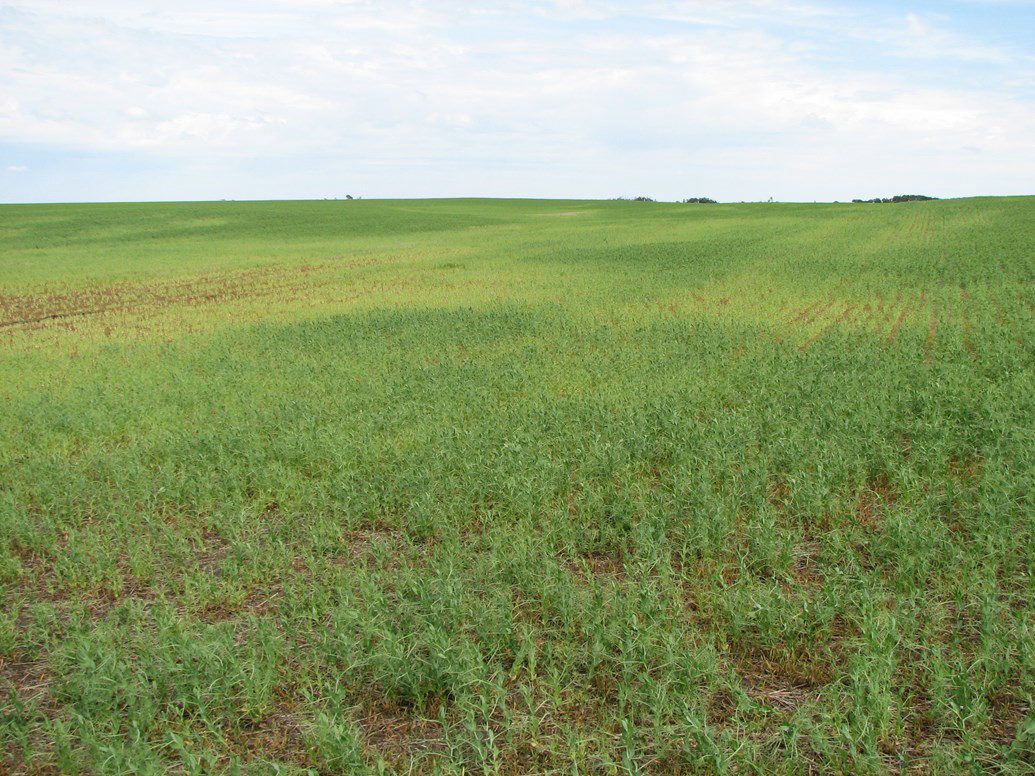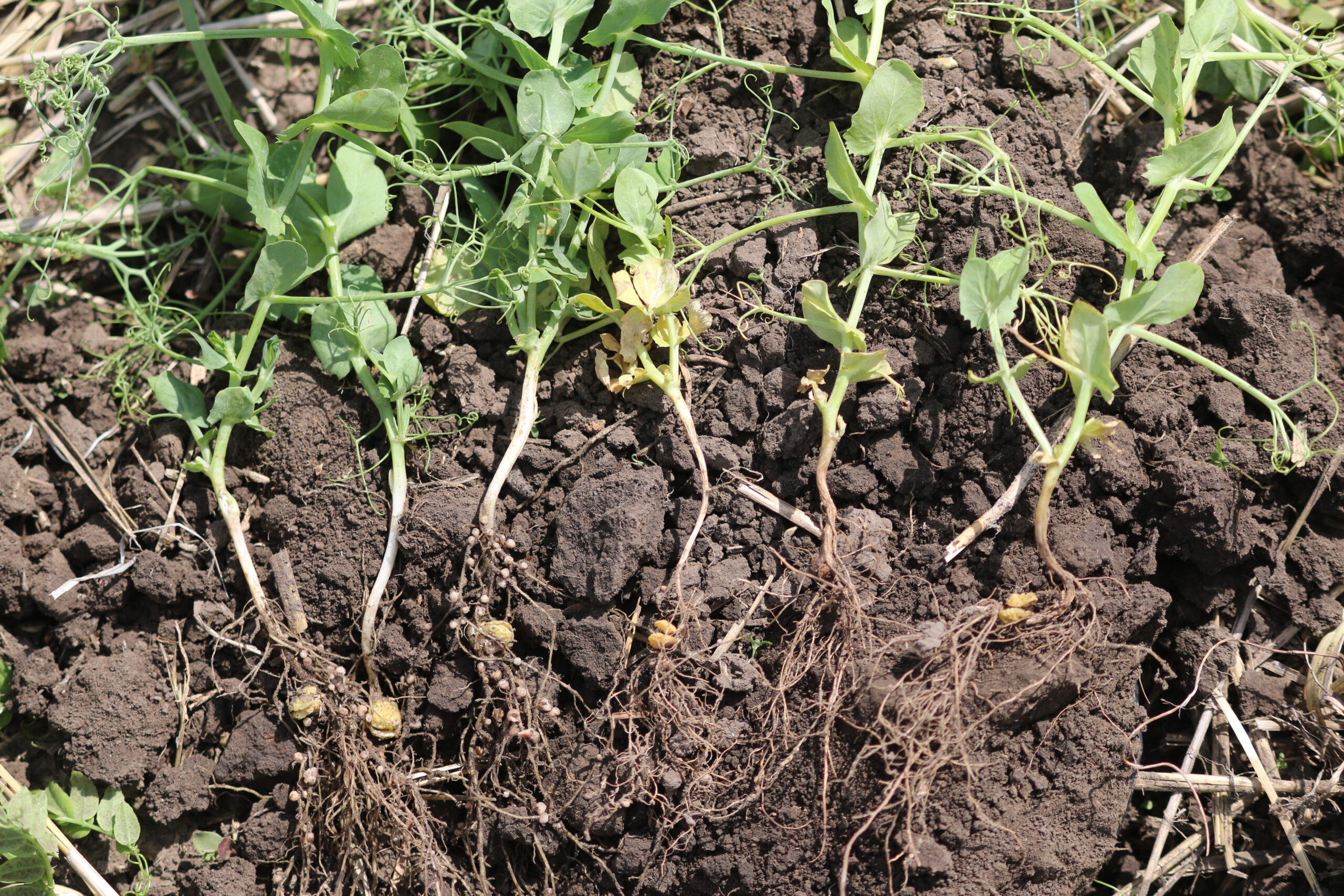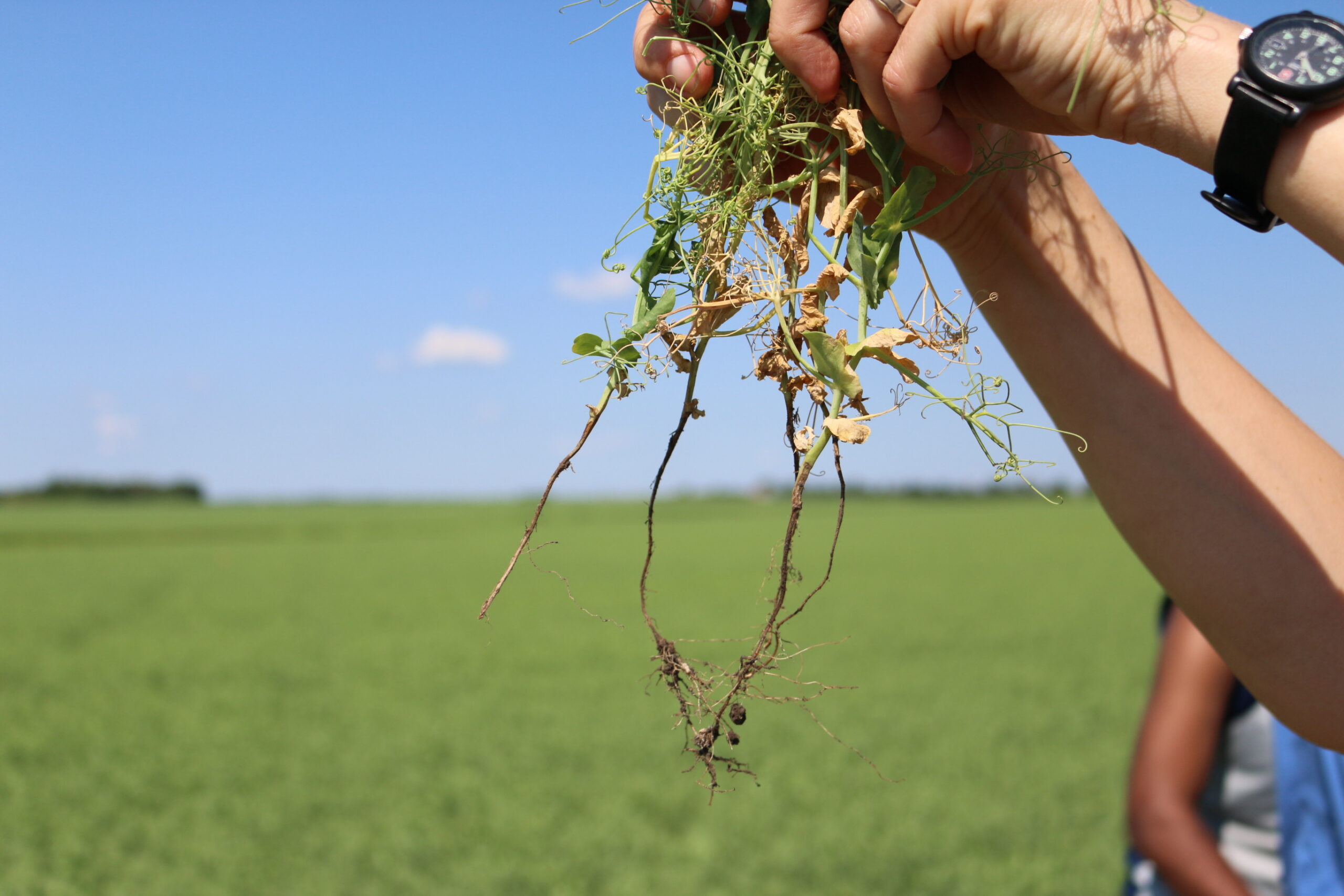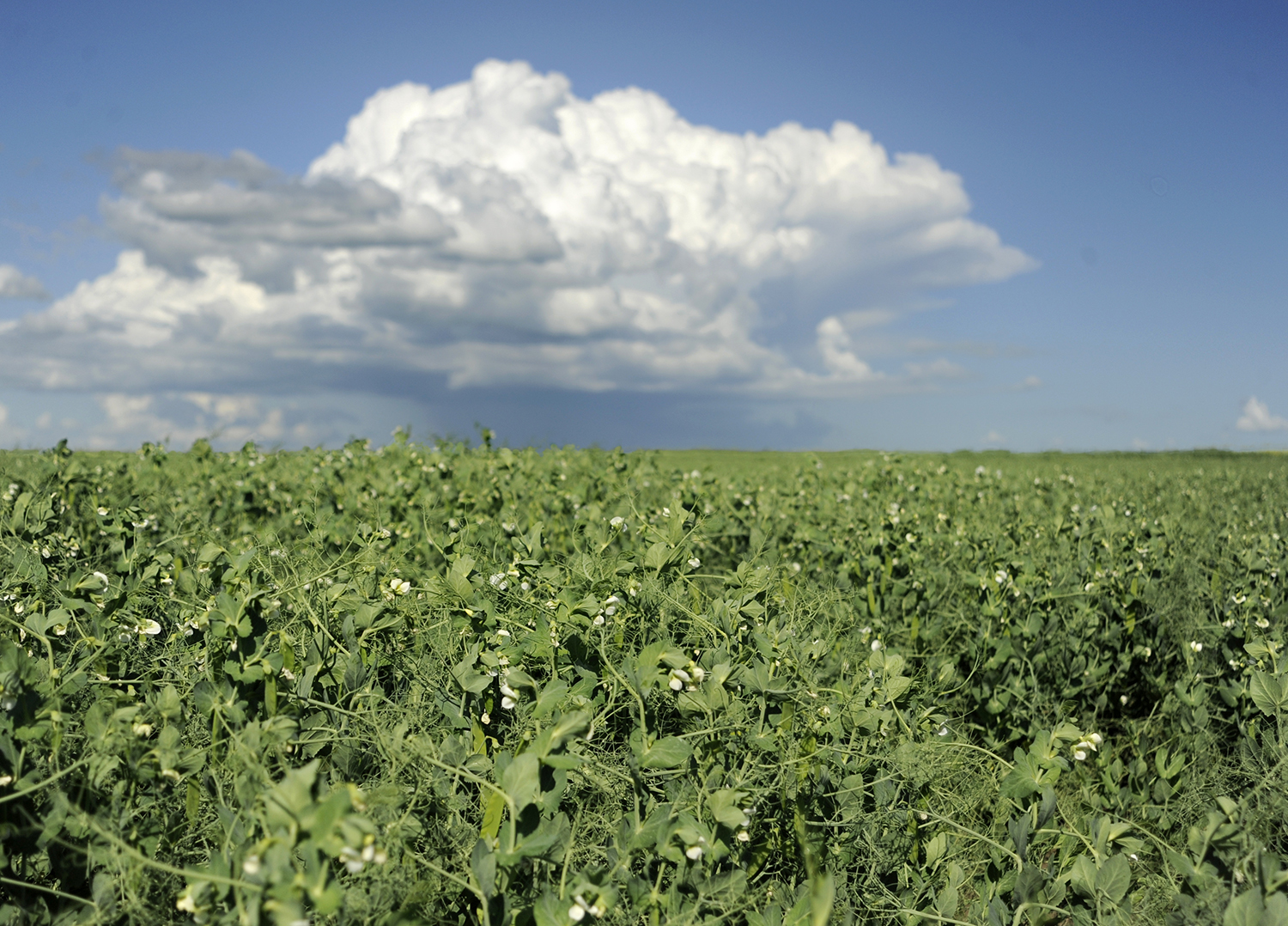Aphanomyces euteiches and Fusarium root rots have been identified as field peas and lentils’ primary root rotting pathogens in Alberta and Saskatchewan. Overall, 40–50% of field peas and 70–80% of fields surveyed from 2015 to 2017 were positive for Aphanomyces euteiches and Fusarium root rot, respectively. The only effective management for Aphanomyces root rot is extended rotations away from susceptible hosts, such as peas and lentils. Available seed treatments have limited effectiveness or have not been extensively tested under field conditions. However, the combination of rotation strategy with the use of biofumigant cover crops, such as Brassica spp., has the potential to increase the rate of Aphanomyces oospore decline, subsequently shortening the necessary rotation interval time for lentil and pea crops.
To provide practical insights for producers, this project was designed with three key objectives:
- Evaluate the impact of a selection of cover crops on a subsequent season’s pea crop’s susceptibility to Aphanomyces root rot and on soil health parameters.
- Determine the rate of decay of Aphanomyces and Fusarium inoculum in Prairie soils over two years, with and without cover crops and susceptible hosts.
- Assess the Aphanomyces and Fusarium inoculum potential of producers’ fields where cover crops are routinely grown and determine whether cover cropping practices help soil suppress these pathogens.
Brassica and other cover cropping treatments were cultivated at four locations in 2019 and 2021 to achieve these objectives. The biomass of these crops was either tilled into the soil or left untilled. This was followed by a pea crop in 2020 and 2022, respectively. The first two objectives resulted in 160 plots, each representing a different treatment, sampled via a randomized complete blocking design layout. These plots covered locations where peas had been grown in 2016–2017 with very high Aphanomyces levels: Lethbridge, Lacombe, and Saskatoon. The treatments included controls representing common rotation crops with increased (pea) or no expected impact on oospore levels (cereal and canola), common grain crops with potential biofumigant potential (oats-green manure and seed, rye-green manure and seed, caliente mustard-green manure and seed), cover crops with nitrogen-fixing capabilities (Vicia fabae-green manure and seed, clover, and clover and brassica blend), and assorted combinations of Brassica.
For objective 3, soil samples were taken from six fields practicing either conventional or regenerative agricultural practices. Each field provided pairs of samples, one treated with Aphanomyces euteiches oospores and the other left untreated. Peas and lentils were grown in these soils for eight cycles, with a four-month pause in 2022 between the fourth and fifth cycles. After six weeks of growth, plants were checked for root rot, and the roots were then replanted into the same soil. The entire process was repeated for each cycle. They were stored in a refrigerator for four months to preserve the soil during the 2022 growing season. In total, there were six types of soils (three conventional and three regenerative), each subjected to two treatments (inoculated with Aphanomyces euteiches or not), with two types of crops (pea or lentil), over eight cycles.
The research progress towards meeting the objectives was evaluated over two reporting periods: 2019–2020 and 2021–2022. Preceding crops in the Lacombe, Lethbridge, and Saskatoon trials did not significantly reduce disease severity for subsequent pea crops, nor did tillage show any discernible effect. However, notable increases in pea yields were observed specifically in plots previously planted with faba bean, oats, and rye, albeit exclusively at the Lacombe site. This enhancement in yield might be attributed to favourable growing conditions experienced by the preceding crops in this location. Despite the notable disease levels observed, quantifying Aphanomyces euteiches levels in soils from these trials posed a considerable challenge, as most tests yielded negative results. Interestingly, in the soil cycling experiment, disease severity rapidly escalated after three cycles of pea cultivation, irrespective of the presence of Aphanomyces euteiches, across both conventional and regenerative agricultural fields. In contrast, lentil crops did not exhibit a similar pattern of disease severity escalation, with no observable peak even after eight cropping cycles.
The findings of this research hold significant implications for growers, industry stakeholders, and researchers. They underscore the importance of implementing diverse crop rotations that incorporate preceding crops such as faba bean, oats, and rye, which could prove beneficial in managing root rot diseases and mitigating yield loss. However, including Brassica species cover crops did not yield any noticeable effect on reducing pea root rot or increasing yields. The results also highlight the potential adverse effects and increased disease severity of repeated pea-cultivation cycles. Moreover, the ineffectiveness of tillage in reducing disease severity or increasing pea yield supports the continued application of no-till practices and the maintenance of diverse crop rotations that benefit agricultural production. In essence, these findings advance sustainable agriculture practices by offering practical strategies for disease management and crop improvement in real-world agricultural settings.



